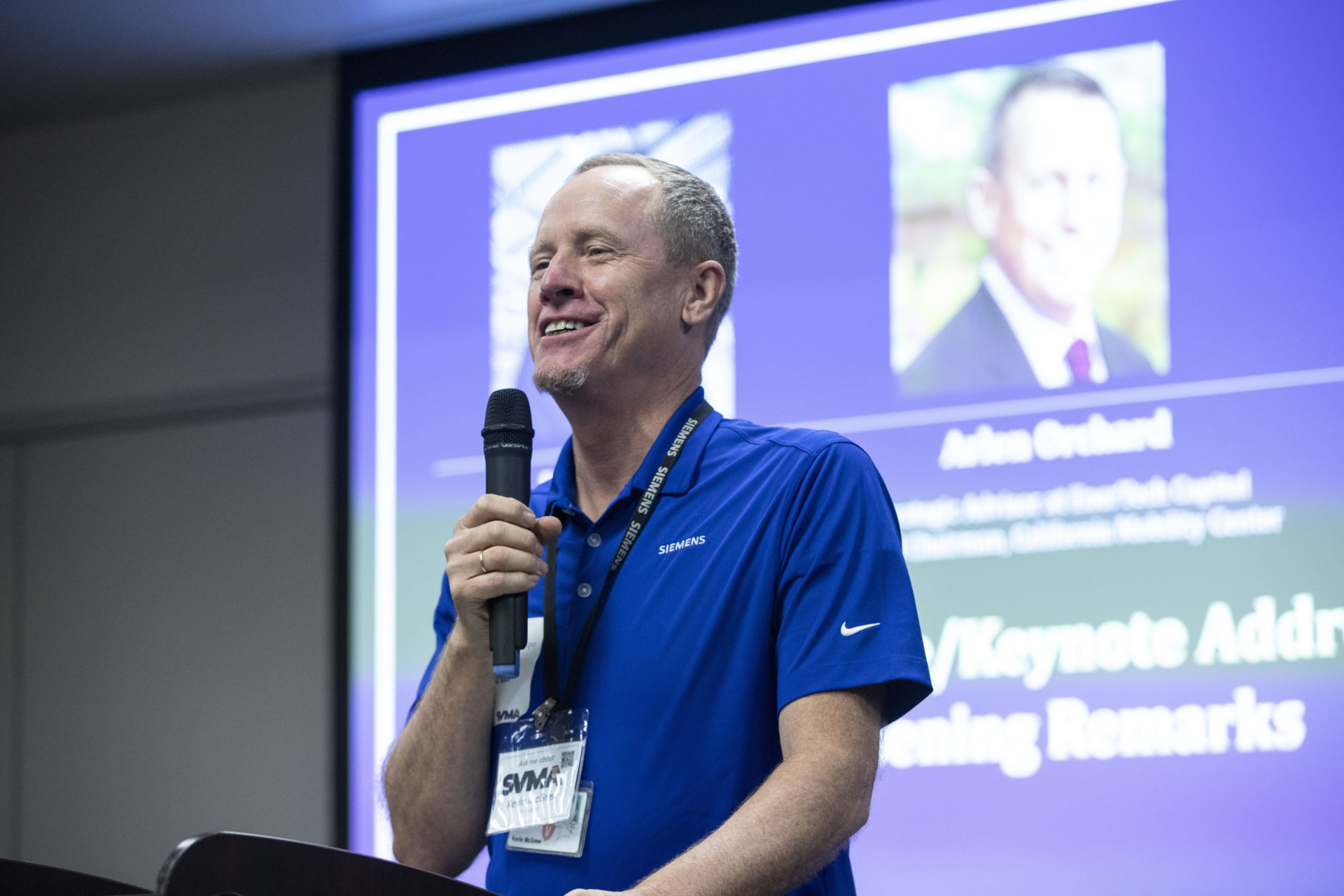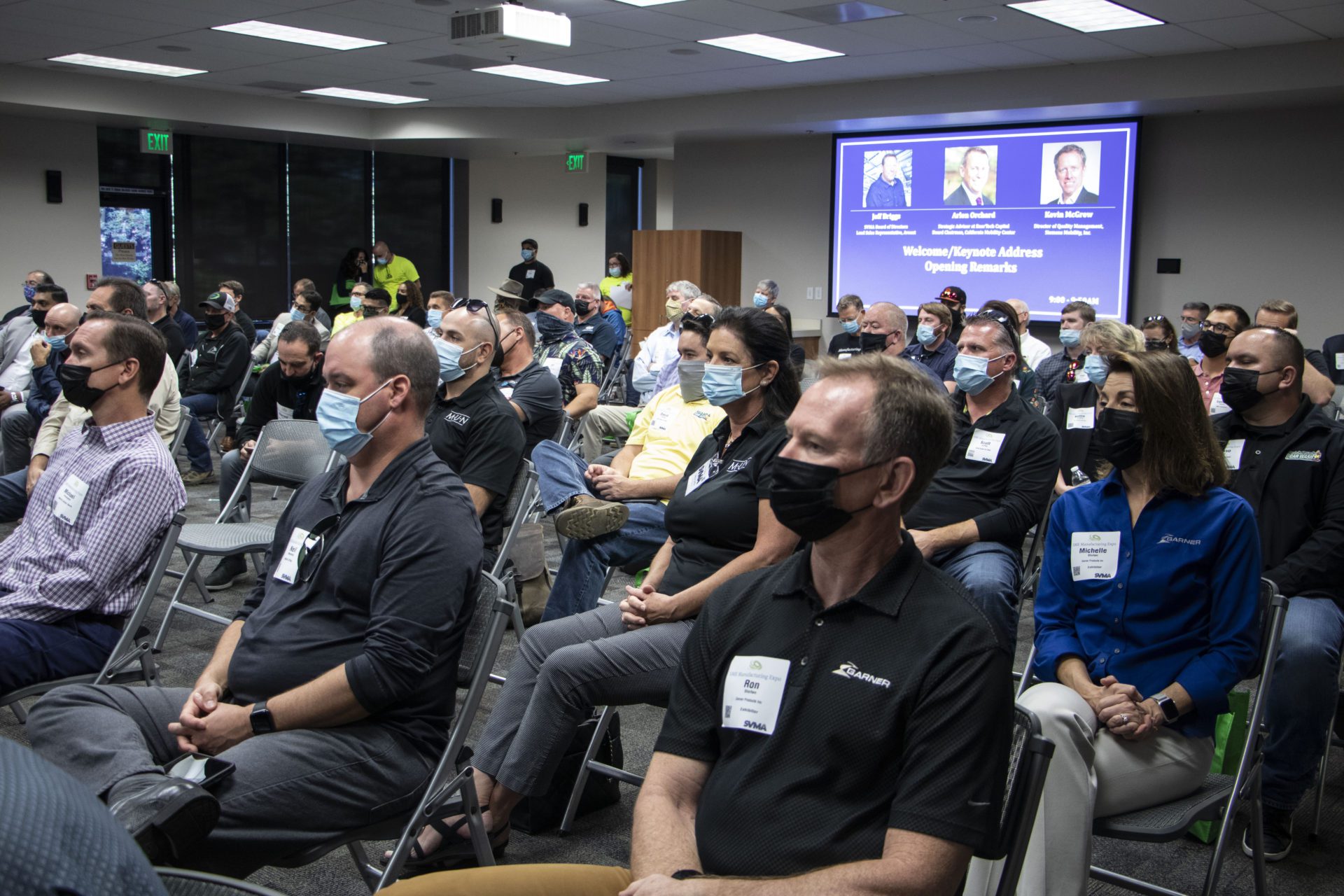SME Expo Connects North Central Valley Manufacturers
November 2021 Feature: Adv. Manufacturing
 If you’ve got skills in advanced manufacturing… you’ve got it made.
If you’ve got skills in advanced manufacturing… you’ve got it made.
In California, more than 1.3 million residents are employed in the manufacturing industry. And with more than 35,000 active manufacturing firms, the state boasts the No. 1 manufacturing output in the country, according to the National Association of Manufacturers.
Supply is in demand, as industry shortages continue to present unprecedented opportunities for manufacturers in Sacramento Valley. Meanwhile, organizations like the North Far North Regional Consortium and the Sacramento chapter of the Society of Manufacturing Engineers are spearheading collaborations with educational institutions, manufacturers, and the regional community to fight against a looming skills gap.
The first-annual SME Manufacturing Expo accomplished just that, offering opportunities for professionals, students, community members, and industry experts to connect, and learn more about advanced manufacturing in the region. The expo was hosted by Sacramento’s chapter of SME and presented by NFNRC, with 55 local manufacturing exhibitors and 500 attendees attending on the first Friday in October—National Manufacturing Day.
The SME Expo brought together professionals in the region, who offered resources and insight on current advanced manufacturing trends. According to Jeff Briggs, Regional Director for Advanced Manufacturing in the North, there was no shortage of interest in the event.
“We had a really good turnout, considering we’re still in the middle of a pandemic,” explains Briggs, who also sits on the Board of Directors for Sacramento Valley’s Manufacturing Alliance (SVMA). “We just decided, you know, let’s go for it.”
According to the director, the expo helped facilitate a learning environment, while providing much-needed connective tissue for the regional manufacturing network.
Pushed by the pandemic from 2020, the SME Expo was a success two years in the making. For an industry that has become accustomed to COVID-related setbacks, it was just another call to adapt.
“What was especially becoming apparent during covid, and very widely publicized and covered, was the destruction in supply chains internationally,” says Dean Peckham, Executive Director of SVMA.
In a survey done in March, the Institute for Supply Management discovered that about 75 percent of companies had reported a supply disruption, and 44 percent had no plan to deal with it. Whether due to shortages to delays, manufacturers in the Sacramento region weren’t receiving equipment or sending out materials with the usual expediency.
“There’s kind of a reshoring effort going on across the country,” says Peckham. “Companies are looking at how—if—they can bring some of their processes back here.”
According to Peckham, the expo gave the smaller manufacturers in the Sacramento Valley the opportunity to do just that. “The goal of the expo was really to build business-to-business relationships,” he explains. “The goal was to build those local relationships between employers, so they don’t have to search across the ocean for their supply chain.”
 The SME Expo held eight discussion panels featuring insight from industry experts. These discussions ranged from “Building a Robust/Diverse Supply Chain Strategy,” to other topics in current manufacturing, including cybersecurity, teaching methods and the growing skills gap. The discussions featured speakers from industry-leading manufacturers, including Siemens Mobility, Weidmuller, Inductive Automation, and Winjit.
The SME Expo held eight discussion panels featuring insight from industry experts. These discussions ranged from “Building a Robust/Diverse Supply Chain Strategy,” to other topics in current manufacturing, including cybersecurity, teaching methods and the growing skills gap. The discussions featured speakers from industry-leading manufacturers, including Siemens Mobility, Weidmuller, Inductive Automation, and Winjit.
The event marked the latest effort by the NFNRC, SME, and SVMA to combine resources to improve manufacturing pathways in the North. The commitment entails orchestrating events, gathering resources, and offering local manufacturing companies a direct pipeline to skilled workers in the North Central Valley. Meanwhile, a strong partnership with the 15 regional community colleges is helping the local industry resist the impending skills gap.
“If I have a question about a manufacturing operation or need, where do I go in the Sacramento region?” SVMA Education Committee Member Steve Dicus recalls asking. “Jeff and I both looked at each other, and we knew the answer… there’s no place.”
Briggs and Dicus were two of the original SVMA organizers in 2017. Now, four years later, the organization is an essential piece of the puzzle when it comes to supplying local employers with skilled workers, advanced training, and networking opportunities.
“We came up with a plan, and some people took us up on it, and it’s working,” Dicus says about the conception of the organization. “The employers now have a voice where they can connect with others, connect with education.”
SVMA orchestrates events like “Train the Trainer” — which offer creative ways to learn new manufacturing skills, showcase new techniques, present potential lesson plans, and receive feedback from manufacturing experts. These sessions provide a peer-motivated learning environment that seeks to facilitate growth within the industry. Industry professionals, community members, and teachers are all invited to attend.
“It’s really effective,” says Briggs, who helps coordinate the Train the Trainer events on the second Saturday of every month. “You’re networking, you’re learning, you’re skill building—you’re leveling everybody up.”
These partnerships between industry professionals and educators ensure that critical manufacturing skills are passed down to the next generation of workers. According to Dicus, this transfer of knowledge is crucial to the future of advanced manufacturing in the region. “So many of these people now in high school, or coming up, do not come out of formal training programs like I did, because they’re all closed.”
Dicus goes on to elaborate: “Your skillset only goes so far, but then when you go in and get a little more training, see somebody else’s facility, or talk to somebody else, it’s amazing how you can exponentially add towards your knowledge base.”
Over the years, the continued partnership with Sacramento-area community colleges has proved essential for the continued growth and development of the manufacturing sector. According to Peckham, events like the SME Expo do more than just a chance to explore careers—they give students a direct line to local manufacturers and employers in the industry.
“We actually had some of the students working at the expo as a way to kind of introduce them to manufacturing, but also was an opportunity to meet local employers in the region,” explains the director.
Career education programs at local community colleges provide relevant field experience and state-of-the-art facilities for advanced manufacturing careers, like mechatronics technology or CNC machining. Peckham, for his part, works closely with Sierra College, which boasts one of the North Central Valley’s leading advanced manufacturing departments. The program is affiliated with the Gene Haas Foundation of Haas Automation—the largest Computer Numeric Control (CNC) machine tool builder in the western world.
California community colleges have seen a 16.8 percent dip in enrollment amid the global health crisis, with hands-on CTE programs bearing the worst of the decline. Peckham blames the lack of engagement for hands-on topics offered by remote learning.
“Enrollment was down at the community colleges just because there wasn’t that in-person experience,” he says. “So now, it’s about really supporting those schools to increase their enrollment and build stronger relationships between the community colleges and the local manufacturers in the region.
“There’s always room for improvement.”
The SME Expo would find itself in the right place at the right time, helping usher back the industry’s return to in-person events. Even with social distancing guidelines in place, the expo satisfied the need for connection between students, industry leaders, professionals, and instructors.
“Overall we were really, really happy about the turnout for the first time out,” Peckham admits. “Going into next year, there’s more time to advertise, build anticipation, especially with the exhibitors.
“We’re going to look at opportunities for partnerships, try and grow—grow the attendance, grow the participation.”
Sources: